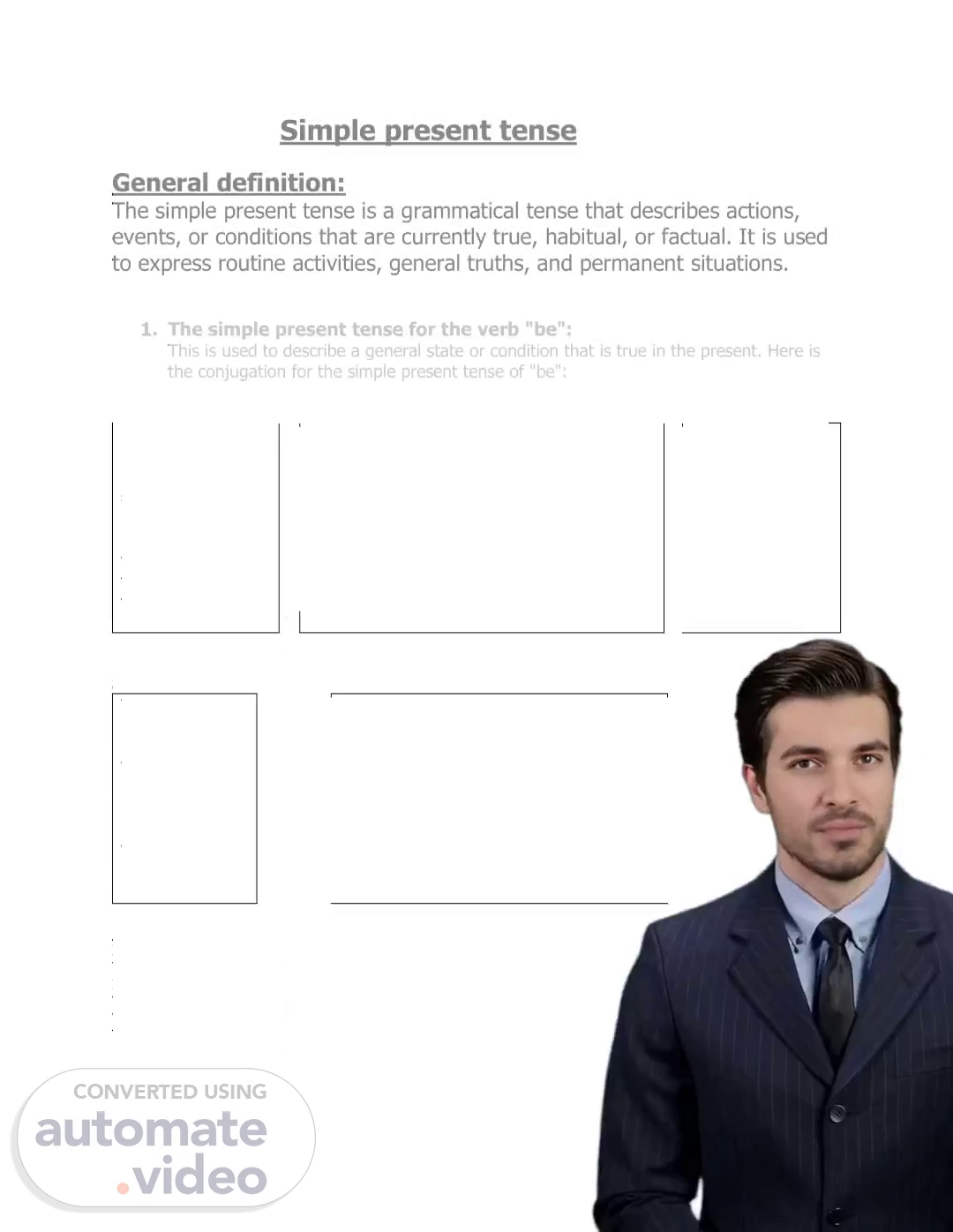
Simple present format_trial_pdf
Scene 1 (0s)
Good day everyone. Today, we will explore how the simple present tense can be used to express routine activities, general truths, and permanent situations. We will look at the conjugation of the verb 'be', with a positive, negative and question format. Let's begin! The verb 'be' becomes 'am' when conjugated with 'I'. Likewise, the verb 'be' becomes 'is' when conjugated with 'he', 'she' or 'it'. And finally, the verb 'be' becomes 'are' when conjugated with 'we', 'you' or 'they'.
Scene 2 (22s)
[Virtual Presenter] Simple present tense is used to express routine activities, general truths, and permanent situations. Verbs such as "read", "like", "work", "live", "watch", "do", "have", "pass", "finish", "study", "try", and "go" take the verb itself for all subjects except for the third person singular (he, she, it), which takes an -s, -es, or -ies ending. For example, "I eat breakfast every day", "She plays tennis on Saturdays", and "They speak English fluently". Negative sentences are formed by adding "don't" and questions by adding "do", with short answers being either "yes" or "no" followed by the verb in its present tense form. Additionally, simple present tense is used to express future actions when referring to schedules or timetables. An example of this usage is "what time do we phone him?.